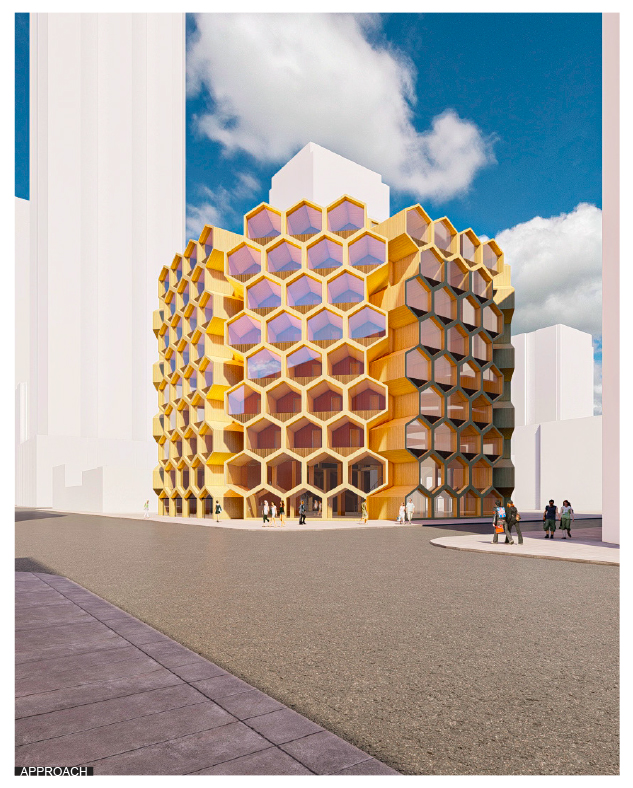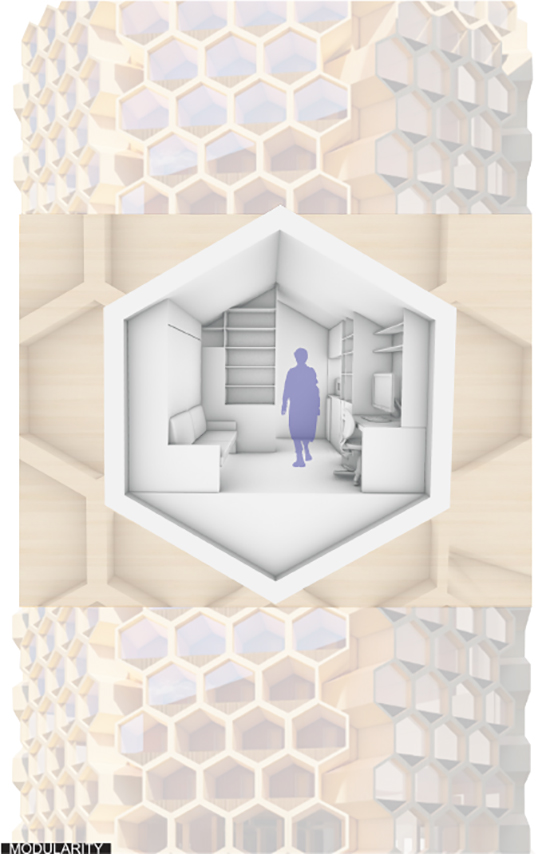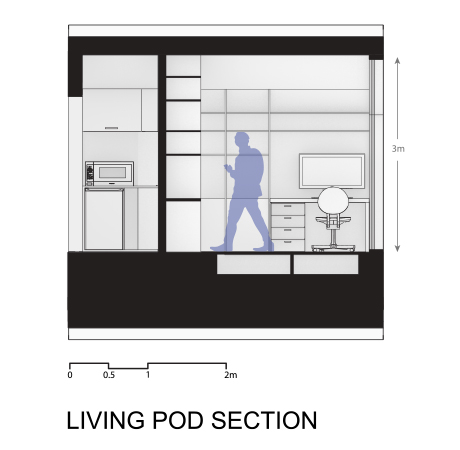Kyla Blake, Wilfred Kam, Lauren Mastrangelo, & Christopher Phillips
Future Home: CO-MB
As land becomes more scarce and housing shortage increases around the world, people searching for residence must adapt to living in emerging forms of co-housing. Rather than living in secluded residential homes supplied with basic programmes and necessities, co-housing emphasizes the relationships between the residents by cultivating a community from the shared spaces. While the bedrooms signify private spaces for residents, other programmes branch into public spaces, such as kitchen, dining, laundry, and lounge, in not only promoting social interactive spaces but also reducing the number of programmes within each residential unit.
The integration of a modular building system allows for the flexibility of individuals living in a co-housing within a variety of urban settings at various heights. The modularity of the hexagon pods relies on prefabrication as the building envelope and structural system. As a result, prefabrication reduces the time for on-site construction as most of the building elements are transported to the site and erected. Due to the flexible applications and programmes of the proposed pods, the modular design can stack infinitely, servicing as a co-housing that ranges from a low-rise to a high-rise building.
Future Home: CO-MB
As land becomes more scarce and housing shortage increases around the world, people searching for residence must adapt to living in emerging forms of co-housing. Rather than living in secluded residential homes supplied with basic programmes and necessities, co-housing emphasizes the relationships between the residents by cultivating a community from the shared spaces. While the bedrooms signify private spaces for residents, other programmes branch into public spaces, such as kitchen, dining, laundry, and lounge, in not only promoting social interactive spaces but also reducing the number of programmes within each residential unit.
The integration of a modular building system allows for the flexibility of individuals living in a co-housing within a variety of urban settings at various heights. The modularity of the hexagon pods relies on prefabrication as the building envelope and structural system. As a result, prefabrication reduces the time for on-site construction as most of the building elements are transported to the site and erected. Due to the flexible applications and programmes of the proposed pods, the modular design can stack infinitely, servicing as a co-housing that ranges from a low-rise to a high-rise building.









